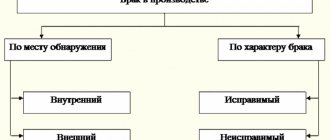General characteristics of account 55
Account 55 in accounting is active and is called “Special accounts in banks”.
This follows from the Chart of Accounts for accounting financial and economic activities and the Instructions for its application (approved by order of the Ministry of Finance of the Russian Federation dated October 31, 2000 No. 94n).
According to the Chart of Accounts, account 55 is intended to record information about the availability and movement of:
- funds in rubles and foreign currencies located on the territory of Russia and abroad in letters of credit, check books, other payment documents (except bills) on current, special and other special accounts;
- targeted financing funds (in that part that is subject to separate storage).
Account 55: transactions with a covered letter of credit
Between JSC “Flagman” and LLC “Industrialist” an agreement was concluded for the supply of equipment for merchant ships in the amount of 1,314,500 rubles. The agreement stipulates that payment in favor of Industrialist LLC is carried out through a covered letter of credit, in connection with which Flagman JSC opened a letter of credit in the amount of 1,314,500 rubles with Omega Bank.
The supply of equipment under the contract was carried out in part in the amount of 1,220,300 rubles, for which the relevant documents were provided. The remaining funds were credited to the Flagman bank account.
For servicing the letter of credit, Omega Bank charged a commission of 0.05% of the letter of credit amount.
Payments under the supply agreement were made upon provision of transport documents and invoices from Industrialist LLC.
The following entries were made in the accounting of JSC “Flagman”:
| Debit | Credit | Description | Sum | Document |
| 55.1 | 51 | Reflects the amount of funds deposited for the covered letter of credit | 1,314,500 rub. | Bank statement |
| 08.4 | 60 | Equipment purchased from Promyshlennik LLC was accepted for accounting | 1,220,300 rub. | Packing list |
| 60 | 55.1 | Funds were transferred in favor of Industrialist LLC as payment for purchased equipment | 1,220,300 rub. | Payment order |
| 08.4 | 51 | The amount of the Omega Bank commission for servicing the letter of credit is taken into account (RUB 1,314,500 * 0.05%) | 657 rub. | Bank statement |
| 51 | 55.1 | The balance of unused funds is credited to the current account of “Flagman” (RUB 1,314,500 – RUB 1,220,300) | 94,200 rub. | Bank statement |
What are the subaccounts when maintaining account 55
You can open the following sub-accounts for account 55:
- 55-1 “Letters of credit”;
- 55-2 “Checkbooks”;
- 55-3 “Deposit accounts”, etc.
Let's consider each of them separately.
Subaccount 55-1 “Letters of credit”
This takes into account the movement of funds in letters of credit.
REFERENCE
When making payments under a letter of credit, the issuing bank, acting on behalf of the payer, undertakes to the recipient of funds (clause 1 of Article 867 of the Civil Code of the Russian Federation):
- make payments;
- accept and pay a bill of exchange issued by the recipient of funds;
- perform other actions to execute the letter of credit upon presentation by the recipient of funds of the documents provided for in the letter of credit and in accordance with the terms of the letter of credit.
The main typical transactions for account 55 may be as follows.
The crediting of funds to letters of credit is reflected in the debit of account 55 and the credit of accounts:
- 51 “Current accounts”;
- 52 “Currency accounts”;
- 66 “Settlements for short-term loans and borrowings”;
- other similar accounts.
Funds in letters of credit accepted for accounting under account 55 are written off as they are used (according to bank statements). Usually - in Dt 60 “Settlements with suppliers and contractors”.
Unused funds in letters of credit after restoration by the bank to the account from which they were transferred are reflected according to Kt 55 and Dt 51 or 52.
Analytical accounting for subaccount 55-1 is carried out for each letter of credit issued by the organization.
Subaccount 55-2 “Checkbooks
This shows the movement of funds in check books.
The deposit of funds when issuing check books is reflected in Dt 55 and the credit of accounts 51, 52, 66 and other similar accounts.
| Situation | Solution |
| Amounts from check books received from the bank | They are written off as checks issued by the organization are paid. That is, in the amounts of repayment by a credit institution of checks presented to it (according to bank statements) with Kt 55 to the debit of settlement accounts (76 “Settlements with various debtors and creditors”, etc.). |
| Amounts for checks issued but not paid by the bank (not presented for payment) | Remains on account 55. The balance on subaccount 55-2 must correspond to the balance on the bank statement. |
| Amounts of checks returned to the bank (remaining unused) | Reflected according to Kt 55 in correspondence with account 51 or 52 |
Analytical accounting for subaccount 55-2 is also carried out for each checkbook received.
Subaccount 55-3 “Deposit accounts”
This reflects the movement of funds invested by the organization in bank and other deposits.
| Situation | Solution |
| Transferring money to deposits | Reflected according to Dt 55 in correspondence with account 51 or 52 |
| Return of deposits by the bank | Doing reverse entries |
Analytical accounting for subaccount 55-3 is maintained for each deposit.
On separate sub-accounts to account 55, the movement of target financing funds separately stored in the bank is taken into account. In particular, received budget money, funds to finance capital investments accumulated and spent by the organization from a separate account, etc.
Accounting records from check books
To begin with, it should be noted that a checkbook is a document of strict accountability and is issued exclusively by the bank. This document must be filled out carefully, eliminating corrections and errors.
The check consists of a tear-off part and a spine. After filling it out, the spine remains in the book, and the tear-off part is transferred to the bank to receive funds.
The movement of financial resources when performing transactions using checkbooks is reflected in subaccount 55.2. Thus, when a checkbook is issued, a certain amount of funds is deposited, which is reflected in the following entry:
1) Dt 55.2
Kt 51, 52, 66.
Check book funds are debited from the account as checks issued by the organization are cleared by the bank, which is reflected in the following transaction:
1) Dt 76
Kt 55.2
If the checks were returned to the credit institution, the amounts for them are reflected in the following entry:
1) Dt 51 or 52
Kt 55.2.
The concept of “Special Account”, its purpose and types
Currently, non-cash transactions are an integral part of the work of almost every business entity.
In this connection, organizations use bank accounts to make payments. For enterprises, in addition to current accounts, credit institutions (banks) can open special accounts into which funds are credited for certain business purposes. Conceptual help!
A special account is an account opened by an organization in a credit institution (bank) for the purpose of storing and collecting funds in Russian currency or foreign currency for carrying out transactions using letters of credit, check books and other payment documents, as well as for reflecting transactions on the movement of funds of the target financing.
The type list of special accounts is determined by the subaccounts opened for account 55.
To open special bank accounts, you must fill out an application for opening. The application form is determined by the type of special account. For example:
- Application for a letter of credit;
- Application for registration of a settlement check book;
- Application for opening special accounts
Description of the “Other special accounts” account
Subaccount 55.04 “Other special accounts” is intended to account for the organization’s funds in national currency placed in other special accounts in banking institutions:
- budget financing;
- financing of capital investments;
- funds received from a higher organization;
- for the payment of compensation to employees with a special status (disabled people, Chernobyl victims, miners, etc.);
- government grants and subsidies;
- payments for the maintenance of social facilities.
Analytical accounting can be carried out by types of funds and purposes of their use.
Accounting for settlements on deposit accounts (account 55 subaccount 3)
On account 55, subaccount 3 “Deposit accounts”, funds in open special deposit accounts in banks are taken into account in order to generate additional income for the enterprise.
Conceptual help!
A deposit account is a type of special account that is opened in a bank on the basis of a concluded agreement in order to receive additional income in the form of interest.
Enterprises have the right to open deposit accounts in one or more banks in a certain currency, amount and for a certain period, in accordance with an agreement concluded with a credit institution.
Business transactions on account 55/3 “Deposit accounts”
| № | Contents of business transactions | Source documents | Corresponding accounts | |
| Debit | Credit | |||
| 1 | 2 | 3 | 4 | 5 |
| 1 | Deposit accounts were opened in banks | Application for opening an account, bank statements | 55/3 | 50, 51, 52 |
| 2 | Accrued income (interest) on deposit accounts | Bank statements | 55/3 | 91/1 |
| 3 | Deposits were closed and the deposit amounts were received at the cash desk, on a bank account, on a foreign exchange account, along with accrued income | Bank statements | 50, 51, 52 | 55/3 |
Accounting for settlements with letters of credit (account 55 subaccount 1)
Account 55, subaccount 1, takes into account the movement of funds under letters of credit issued by credit institutions. The debit of the account records cash receipts and the credit debits. In order to organize analytical accounting, analytical subaccounts can be opened for this account (accounting by counterparties).
Conceptual help!
A letter of credit is a form of non-cash payment, which is an order of an enterprise (applicant) issuing a letter of credit to its bank branch (issuing bank) on the transfer of funds to the supplier's (beneficiary) bank for payment for inventory, work performed and services rendered by enterprises and organizations, on the terms specified in the buyer's letter of credit application.
Applicant/ Letter of Credit Applicant (Applicant) - an enterprise (organization) sending an order to the bank to open a letter of credit.
Issuing Bank - a bank that, by order of the applicant of the letter of credit, opens a letter of credit in favor of the beneficiary.
Beneficiary – an enterprise (organization) in whose favor a letter of credit has been opened.
Beneficiary's bank is a bank that provides services to the beneficiary when making payments using a letter of credit.
A letter of credit is opened within the scope of settlements with one counterparty. To do this, the payer must submit an application to the issuing bank to open a letter of credit, reflecting the main points:
- type of letter of credit;
- terms of payment for the letter of credit (with or without acceptance);
- account number for crediting under a covered letter of credit;
- validity period, indicating the closing date;
- name of goods, works and services for payment for which a letter of credit is opened;
- details of the contract;
- goods shipment period;
- and etc.
After the letter of credit is opened, the beneficiary receives a notification.
Conceptual help!
Advising is a documented notification from a credit institution about the opening of a letter of credit or amendments to it, sent to the beneficiary.
Advising Bank - a credit institution that advises, at the request of the issuing bank or another bank, a letter of credit to the beneficiary.
The scheme for carrying out operations using a letter of credit form of payment includes the following stages:
- Conclusion of an agreement for the supply of goods and materials, performance of work, provision of services between the supplier and the buyer;
- Filling out an application by the buyer to open a letter of credit;
- Opening of a letter of credit by the issuing bank based on the payer’s application;
- Receipt by the executing bank from the issuing bank of a letter of credit with the authority to execute it;
- The executing bank sends a notice to the beneficiary, indicating the address to which the documents under the letter of credit must be submitted;
- Fulfillment by the supplier of obligations under the contract (supply of goods, performance of work, provision of services);
- Provision by the supplier to the executing bank of documents confirming the completion of the transaction;
- Execution of the letter of credit by the executing bank;
- Closing a letter of credit account.
This form of payment has certain advantages:
- guarantee of compliance with the volumes and terms specified in the letter of credit;
- guarantee of fulfillment of payment obligations.
Disadvantages of the letter of credit form:
- diversion of funds from the turnover of the enterprise until the receipt of goods, works and services;
- additional time spent on paperwork;
- bank commission when opening a letter of credit.
In accordance with Chapter 6 “Settlements under a letter of credit” of Bank of Russia Regulations dated June 19, 2012 N 383-P (as amended on October 11, 2018) “On the rules for transferring funds,” the following types of letters of credit can be distinguished:
Conceptual help!
A revocable letter of credit is a letter of credit that can be canceled or amended by the issuing bank at any time without prior notice to the beneficiary.
An irrevocable letter of credit is a letter of credit that can be canceled or amended by the issuing bank only with the consent of the beneficiary.
A covered letter of credit is a letter of credit (deposited), opened by transferring the amount of the letter of credit by the issuing bank at the order of the payer to the executing bank for the period of validity of the letter of credit.
An uncovered letter of credit is a form of payment in which the issuing bank grants the executing bank the right to write off the amount of the letter of credit from the existing correspondent account. A necessary condition is the existence of a correspondent relationship between the issuing bank and the nominated bank.
confirmed letter of credit is a letter of credit that has an additional guarantee of payment from the confirming bank in the event that the issuing bank fails to fulfill its payment obligations.
An unconfirmed letter of credit is a letter of credit in which only the issuing bank is responsible for the execution of payment.
Transferable letter of credit – a letter of credit with the possibility of transferring to one or more beneficiaries.
Revolving letter of credit - this type of settlement represents renewable settlements under a letter of credit at certain periods of time (according to the approved schedule) for recurring deliveries of goods and materials, work performed, services rendered.
and etc.
Business transactions on account 55/1 “Letters of credit”
| № | Contents of business transactions | Source documents | Corresponding accounts | |
| Debit | Credit | |||
| 1 | 2 | 3 | 4 | 5 |
| 1 | Upon application for opening a letter of credit, the enterprise’s funds from the current account, cash desk, loan accounts and a special account for targeted financing are transferred to banks serving suppliers and contractors with whom the enterprise has entered into an agreement for the supply of materials, performance of work and provision of services (letter of credit has been opened) | Bank statements, application for opening a letter of credit | 55/1 | 50,51, 67, 66,86 |
| 2 | According to the documents submitted to the bank for the shipment of materials, work performed and services provided, funds from the letter of credit were credited to the accounts of suppliers and contractors (settlements were made from the letter of credit account with suppliers and contractors) | Consignment note, certificate of work performed, services rendered. Bank statement. | 60 | 55/1 |
| 3 | The unused amount of the letter of credit was returned to the bank of the company that issued it and credited to the account from which the letter of credit was issued (the unused amount of the letter of credit was returned as a result of termination of the contract) | 50, 51, 66, 67, 86 | 55/1 | |
How to determine which funds need to be considered separately
Such means of payment of the company meet the following conditions:
- Such financial assets are presented in the form of payment documents. For example, in the form of check books, letters of credit. Moreover, it makes no difference which accounts such documents were created for, special or current. The country of actual location also does not play any role.
- Monetary resources are targeted. In other words, targeted financing is subject to separate accounting and storage in special accounts. Generalization of targeted funds and financing for specific purposes is unacceptable.
For such financial resources of the company, the current chart of accounts (Order of the Ministry of Finance No. 94n) provides for a separate account 55 “Special accounts in banks”.







